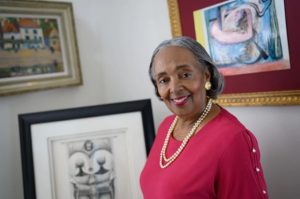CAA News Today
News from the Art and Academic Worlds
posted by CAA — February 05, 2020
|
|
|
|
|
Want articles like these in your inbox? Sign up: |
Memorial Celebration for Professor Victor Margolin at CAA 2020
posted by CAA — February 05, 2020
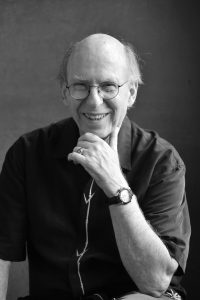
Image courtesy Bend Design Conference.
Please join us for a Memorial Celebration for Professor Victor Margolin during the 2020 Annual Conference on February 12, 2020.
Memorial Celebration for Professor Victor Margolin
Wednesday, February 12, 2020
5:30-7:30 pm
Resident’s Dining Room
Jane Addams Hull House
800 S. Halsted Street
Chicago, Illinois
If you’d like to attend, please RSVP to Rebecca Houze: rhouze@niu.edu
Victor Margolin (1941-2019) was Professor Emeritus of Design History at the University of Illinois at Chicago. He served on the CAA Board of Directors from 1993 to 1997 and was a frequent presenter and session chair at CAA’s Annual Conferences. He promoted the study of design and design history by encouraging the work of others and contributing to the activities of the Design Studies Forum. He was honored with Lifetime Achievement Awards for design research from LearnXDesign (2015) and the Design Research Society (2016). Victor was a founding editor of the academic design journal Design Issues. Books that he has written, edited, or co-edited include The Struggle for Utopia: Rodchencko, Lissitzky, Moholy-Nagy, 1917-1936; Design Discourse; The Designed World: Images, Objects, Environments; and The Politics of the Artificial: Essays on Design and Design Studies. He also edited and co-edited important volumes of essays on design titled Design Discourse (1989), The Idea of Design (1995) Discovering Design (1995) and The Designed World: Images, Objects, Environments (2002). The first two volumes of his World History of Design were published in April 2015.
In the words of his colleague and co-editor Bruce Brown, “Victor was a man of immense intellectual generosity and he mentored scholars young and old around the world. He was always a reasoned advocate of design as a tool to create societies that were more just, equitable and compassionate. These values were accompanied by a keen mind and twinkling eye that drew Victor to people all over the world. His deep humanity, ideas and insights will live on through books and essays to inspire future generations of designers.”
The Jane Addams Hull-House Museum is located on the campus of the University of Illinois at Chicago, 800 S. Halsted Street, Chicago. It is easily reached by public transportation using the UIC Halsted stop on the Blue Line or the Halsted Bus (#8), or via the Eisenhower Expressway (I-290) and the Dan Ryan Expressway (I-90). Parking is available at the Halsted and Taylor Street garage.
Announcing the 2020 Awards for Distinction Recipients
posted by CAA — February 04, 2020
Honorees this year include Eleanor Antin, Joseph Leo Koerner, Maud K. Lavin, Annet Couwenberg, Harriet Senie, Kyle Staver, and many other scholars, artists, and teachers
CAA Annual Conference, Chicago, February 12-15, 2020
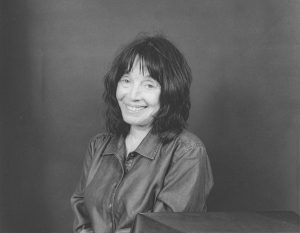
Eleanor Antin
We are pleased to announce the recipients and finalists of the 2020 CAA Awards for Distinction. Among the winners this year is Eleanor Antin, recipient of the 2020 Distinguished Artist Award for Lifetime Achievement. Born in the Bronx in 1935 to immigrant parents, Antin is an innovator and pioneer as a feminist artist, a performance and installation artist, a conceptual artist, filmmaker, and writer. She is an emeritus Professor of Visual Arts at the University of California, San Diego and author of several books including An Artist’s Life by Eleonora Antinova and Conversations with Stalin. Antin’s solo museum exhibitions have appeared at the MoMA, the Whitney Museum, and, in 2019, the Los Angeles County Museum of Art with her retrospective, Eleanor Antin: Time’s Arrow. Her awards include a Guggenheim Fellowship and a 2006 Women’s Caucus for Art Lifetime Achievement Award.
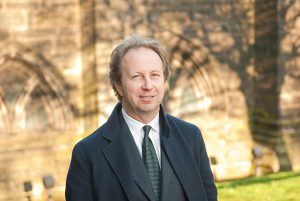
Joseph Leo Koerner
Joseph Leo Koerner is the recipient of the 2020 Distinguished Lifetime Achievement Award for Writing on Art. His achievements include four landmark books on sixteenth-century paintings: The Moment of Self-Portraiture in German Renaissance Art (University of Chicago Press, 1993), The Moment of Self-Portraiture in German Renaissance Art (University of Chicago Press, 2003), The Reformation of the Image (Reaktion Books, 2004), and Bosch and Bruegel: From Enemy Painting to Everyday Life (Princeton University Press, 2016). Koerner has also written widely on more recent artists, from Caspar David Friedrich to Paul Klee, and explored early-twentieth century Vienna through a documentary project and a semi-autobiographical film.
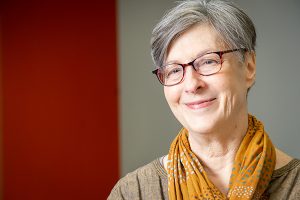
Maud K. Lavin
Dr. Maud K. Lavin is the recipient of the 2020 Distinguished Feminist Award for scholarship. Over the course of three decades, Lavin has worked tirelessly as a key pioneer in the field of feminist art history and visual studies. She is the author of numerous books including the first English-language book on Berlin Dada artist Hannah Hoch, Cut with the Kitchen Knife: The Weimar Photomontages of Hannah Hoch (Yale University Press, 1993), and most recently, Boys’ Love, Cosplay, and Androgynous Idols: Queer Fan Cultures in Mainland China, Hong Kong, and Taiwan, co-edited with Ling Yang and Jamie Zhao (Hong Kong University Press, 2017). She is a professor of Visual and Critical Studies and Art History, Theory, and Criticism at the School of the Art Institute of Chicago.
The Awards for Distinction will be presented during Convocation at the CAA Annual Conference on Wednesday, February 12 at 6:00 PM at the Hilton Chicago. This event is free and open to the public.
The full list of 2020 CAA Awards for Distinction Recipients
Distinguished Artist Award for Lifetime Achievement
Eleanor Antin
Distinguished Lifetime Achievement Award for Writing on Art
Joseph Leo Koerner
Distinguished Feminist Award—Scholar
Maud K. Lavin
Distinguished Teaching of Art Award
Annet Couwenberg
Distinguished Teaching of Art History Award
Harriet Senie
Artist Award for Distinguished Body of Work
Kyle Staver
CAA/AIC Award for Distinction in Scholarship and Conservation
Jeanne Marie Teutonico
Award for Excellence in Diversity
3Arts
Outstanding Leadership in Philanthropy Award
Terra Foundation for American Art
Charles Rufus Morey Book Award
J. P. Park
A New Middle Kingdom: Painting and Cultural Politics in Late Chosŏn Korea (1700–1850)
University of Washington Press, 2018
Finalists
Chanchal B. Dadlani
From Stone to Paper: Architecture as History in the Late Mughul Empire
Yale University Press, 2019
Barbara Furlotti
Antiquities in Motion: From Excavation Sites to Renaissance Collections
Getty Publications, 2019
Matthew Looper
The Beast Between: Deer in Maya Art and Culture
University of Texas Press, 2019
Alfred H. Barr Jr. Award
Karl Kusserow and Alan C. Braddock
Nature’s Nation: American Art and Environment
Princeton University Art Museum, 2019
with contributions by Miranda Belarde-Lewis, Teddy Cruz, Rachael Z. DeLue, Mark Dion, Fonna Forman, Laura Turner Igoe, Robin Kelsey, Anne McClintock, Timothy Morton, Rob Nixon, Jeffrey Richmond-Moll, Kimia Shahi, and Jaune Quick-to-See-Smith
Honorable Mention
Esther Gabara
Pop América, 1965–1975
Duke University Press, 2018
Finalists
Cathleen Chaffee
Introducing Tony Conrad: A Retrospective
Albright-Knox Art Gallery, Buffalo, NY, in association with Koenig Books, London, 2019
Jessica Morgan and Alexis Lowry
Charlotte Posenenske: Work in Progress
Dia Art Foundation and Walther König, 2019
Elizabeth Morrison
Book of Beasts: The Bestiary in the Medieval World
Getty Publications, 2019
Alfred H. Barr Jr. Award for Smaller Museums, Libraries, Collections, and Exhibitions
Denise Murrell
Posing Modernity: The Black Model from Manet and Matisse to Today
Yale University Press in association with The Miriam and Ira D. Wallach Art Gallery, Columbia
University in the City of New York, 2018
Honorable Mention
Phillip Earenfight
Shan Goshorn: Resisting the Mission
Trout Gallery, Dickinson College, 2019
Finalists
Tracy L. Adler
Jeffery Gibson: This is The Day
Prestel Publishing, 2018
Faith Brower, Heather Ahtone, and Seth Hopkins
Warhol and the West
University of California Press, 2019
Frank Jewett Mather Award for Art Criticism
Darby English
To Describe a Life: Notes from the Intersection of Art and Race Terror
Yale University Press, 2019
Art Journal Award
Philip Glahn and Cary Levine
“The Future Is Present: Electronic Café and the Politics of Technological Fantasy”
Art Journal, vol. 78, no. 3 (Fall 2019): 100–121
Arthur Kingsley Porter Prize
Claudia Brittenham
“Architecture, Vision, and Ritual: Seeing Maya Lintels at Yaxchilan Structure 23″
The Art Bulletin, vol. 101, no. 3 (September 2019): 8–36
Learn about the juries that select the recipients of the CAA Awards for Distinction.
A Letter to CAA Members from the History of Art Department at Yale University
posted by CAA — February 03, 2020
Dear Fellow CAA Members,
Last week CAA forwarded to its members an article from a student newspaper, the Yale Daily News, on the subject of introductory courses in the History of Art at Yale, without opportunity for comment from the Department. In the statement below my colleagues and I explain what is actually happening, as we move to offer Yale undergraduates a range of introductory courses that do justice to the diversity of our faculty’s research, of Yale’s collections and of the student body itself.
I work with a group of brilliant art historians who are constantly rethinking what we teach and how to teach it – our vision is expansive rather than reductive, in terms both of coverage and of art-historical methodology. It’s an interesting reflection on the current media ecology that the modest, incremental and generous changes being introduced to Yale’s curriculum could lead to an astonishing outburst of reactionary moral outrage online. Hyperbolic comparisons are rife: the ‘New York Post’ sees us as Visigoths poised to destroy Rome. We read of ‘Stalin at Yale.’ But Stalin murdered nine million people, while our Department is offering four, rather than two, 100-level courses. The parallel is imprecise, to say the least.
As all of us, across the profession, are exploring how to move forward, inspiring students to study the history of art and architecture. This is a matter of urgency in a world where critical visual skills have never been more important. We assert for our discipline a central role in a liberal arts education. Accordingly, plans are already afoot for a discussion around introductory art history teaching at the New York meeting of the Association in 2021. Visigoths will be welcome. I hope to see you there!
- Tim Barringer, Chair, Department of the History of Art, Yale University
The following statement has been approved by all members of the History of Art Department at Yale University:
For more than half a century, Yale’s History of Art Department has been dedicated to “the study of all forms of art, architecture, and visual culture in their social and historical contexts.” A particular strength of the Department’s teaching is close engagement with the great works from major world traditions held in the Yale University Art Gallery, where spectacular examples of European and American paintings and sculpture, prints, drawings and photographs sit alongside world class collections of Asian, African and the Indo-Pacific art. The Beinecke Library, Yale Center for British Art and Peabody Museum hold manuscripts, paintings, drawings and artefacts central to our field of study and teaching mission.
Art history is a global discipline. Yale faculty have made field-changing contributions to the study the arts of the Americas (notably Pre-Columbian art and the full range of North American art from colonial to contemporary), African art and arts of the African Diaspora, Asian and Islamic Arts, and European art from ancient times to today. The diversity of the Department’s faculty and our intellectual interests finds an analogue in the diversity of today’s student body.
Discussions in the Department have focused on how to ensure that this diversity of research and resources can inform and energize our teaching. Offerings at the undergraduate level include upper-level lecture courses that address a full range of subjects (such as ‘Greek Art and Architecture’, ‘African Arts and Expressive Cultures’, ‘American Photojournalism’ and ‘Introduction to Contemporary Art’). Small intensive seminars are more focused still (such as ‘Surrealism,’ ‘Japanese Screens’, and ‘The Global Museum’). We aim for the widest possible selection of courses, balanced across time and region, while we maintain and cherish intensive coverage of western art, from classical Greece to medieval, Renaissance and Baroque, nineteenth-century, modern and contemporary.
But what about survey courses, which aim to introduce a large body of students from across Yale to the History of Art? We have traditionally offered two survey courses. The first discusses the ancient Middle East, Egypt, and pre-Renaissance European art (HSAR 112). The second covers European and American art from the Renaissance to the present (HSAR 115). New introductory courses have been added to these two offerings, such as ‘Global Decorative Arts,’ ‘Arts of the Silk Road,’ ‘Global Sacred Art’ and ‘The Politics of Representation.’ Faculty members have designed these introductory courses to engage the wealth of objects in Yale’s collections but also to move across traditions and periods.
Beginning this past Fall 2019, the Department committed to offering four different introductory courses each year. All of these courses, current or future, are designed to introduce the undergraduate with no prior experience of the History of Art to art historical looking and thinking. They also range broadly in terms of geography and chronology. Essential to this decision is the Department’s belief that no one survey course taught in the space of a semester could ever be comprehensive, and that no one survey course can be taken as the definitive survey of our discipline.
As we continue to renew our curriculum while preserving our commitment to introductory teaching of the broadest scope, new courses will replace HSAR112 and 115. Some will engage with the monuments and masterpieces of European and American art, some will introduce other world traditions, and some will be organized thematically offering comparative perspectives. As always, our introductory classes will bring Yale students face to face with works of art and material objects of great beauty and cultural value from across time and place.
We remain as committed as ever to “the study of all forms of art, architecture, and visual culture” and to sharing insights into works of art, from the Parthenon sculptures to Benin bronzes, from Renaissance Florence to Aztec sculpture, from the Taj Mahal to performance and digital art. As life becomes increasingly dominated by the visual, through screens and lenses, Art History’s focus on critical visual analysis has never been more relevant. Recent excitement on social media about Yale’s curriculum demonstrates just how significant and lively – even controversial – the study of Art History can, and should, be. We are delighted to welcome large numbers of students to Art History classes at Yale now and in the future.



